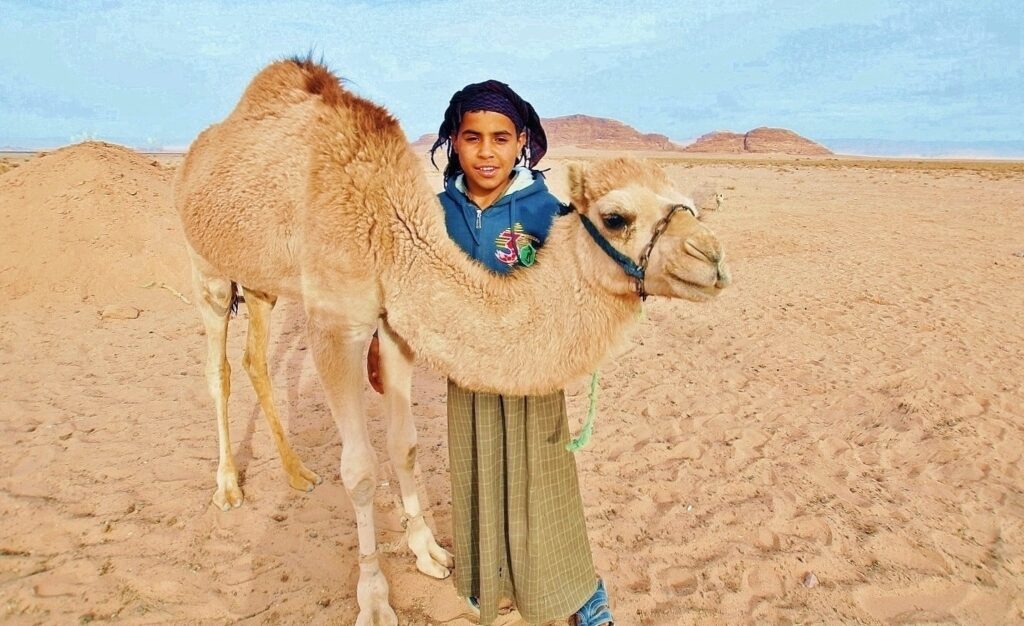Southern Experience
Camels Thrive in Jordan

A young Jordanian boy proudly stands with his six-month old camel during a recent afternoon in the desert of southwest Jordan. Camels have long been a source of riches and survival for nomad tribes across the Middle East and elsewhere, and continue to play an important role today. Photo by Scott Kent
Camels are native to the dry and desert areas of Asia and northern Africa, but are found in other parts of the world as well. Often referred to as a “Ship of the Desert,” camels are particularly common in countries of the the Arabian Peninsula such as Saudi Arabia, Oman, Yemen, and Qatar, in addition to the Kingdom of Jordan. Australia has many wild camels, descended from camels brought from Afghanistan some 150 years ago, as it was believed that camels were far superior to horses for the rugged trips across the inland Australian deserts.
Camels are well-known, and popular, for their incredible strength and endurance. During the many historic wars across the Middle East, it was said by the Bedouin tribesmen that “even if a camel is mortally wounded during a fight, he will not succumb before having carried his rider out of the battle and away from danger before allowing himself to fall.” Camels, in case of need, can survive more than two months without water and about two weeks without food.
Since 1800 BC, camels have been one of the most common means of transport in the Arabian Peninsula and other parts of the world. This majestic creature, which lives 40 to 50 years, was used to help merchants carry gold, ivory, silk, incense and spices to many parts of the world, and especially to the trading capital of Petra in Jordan. Even today, camels remain useful in daily life for many Jordanians, especially the Bedouin, as camels produce wool, milk, and meat, and continue to provide transport. Camels are capable of carrying loads of 900 pounds, although it is generally much less. A camel’s hide provides tents for shelter, and its meat is said to be similar to veal, although tougher.
A female camel carries a baby, like the six-month old baby camel pictured above, for about 12 months before it is born, and the baby camel will be nourished on her milk for a year. It is also common that the baby camel will remain with its parents for up to 10 years in the desert.
See more Scott Kent images in his Worldview blog on HT.com.





























